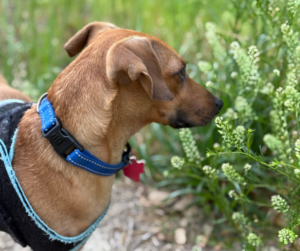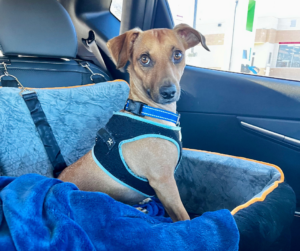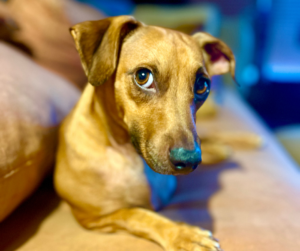Meditation pauses the story in your mind long enough for you to remember that your mind is always telling you a story. – Cory Allen
Michael Baugh CDBC
Meditation is focusing on one thing, to the exclusion of all others. Focusing on one’s breathing, for instance, calms the mind. Inhale. Exhale. Count the breaths. The story in our mind stops. If you’ve tried it, you already know it takes some concentration. The mind is persistent. Thoughts zip in and out. And the story we tell ourselves isn’t always kind. Taking a break and quieting the chatter feels good. It’s good for us, too.
 My dog Charlie and I go on mediation walks. He sniffs. I focus on my breathing and the present moment. The past is little more than fading and ever-changing thoughts. Our future is just wishes and worries. The only real time is right now. I love that. It’s hard to wrap my brain around, too.
My dog Charlie and I go on mediation walks. He sniffs. I focus on my breathing and the present moment. The past is little more than fading and ever-changing thoughts. Our future is just wishes and worries. The only real time is right now. I love that. It’s hard to wrap my brain around, too.
Now.
Here.
This moment.
We tell ourselves stories about our dogs. I enjoy telling stories about how cool Charlie is. Sometimes (often) we tell ourselves stories about how bad our dogs are. We observe our dog’s misbehavior. But it doesn’t stop there. Our minds weave tales about their intentions, what the dog is thinking and feeling. Maybe we get some of it right. Probably we get most of it wrong. It’s fiction, part of the stories we are always telling ourselves – faded, changing, unreliable worries and wishes.
Pause the story long enough to notice it’s always running.
I try not to talk about training Charlie. It’s not something I do to him. I train with Charlie. We are a team. Training helps me focus on one thing, to the exclusion of all others. I focus on Charlie, what he is doing, how my actions reflect in his. We communicate, not psychically but physically, visually, in real-time. Right here and now.
Training is like a meditation. We can sit and meditate. I walk and meditate. When Charlie and I train, that is mediation, too. The story stops long enough for me to notice it. The story about Charlie being slow or stubborn turns off. He’s none of those things. We are learning together, right now, in this moment. The past is over. The future is a wish. Perhaps now we are building a future. We don’t know. We hope. We are learning how to cooperate with each other.
My story about Charlie is not necessarily who he is. It’s my mind’s story. Not his. I pause it for as long as I can. And when it starts again, better that I choose to tell myself a story about Charlie (and myself) that helps us feel good.
Such beautiful lives, his and mine. Take Note. Take a breath and smile.
Michael Baugh teaches dog training in Houston TX. He specializes in aggressive dog training.


